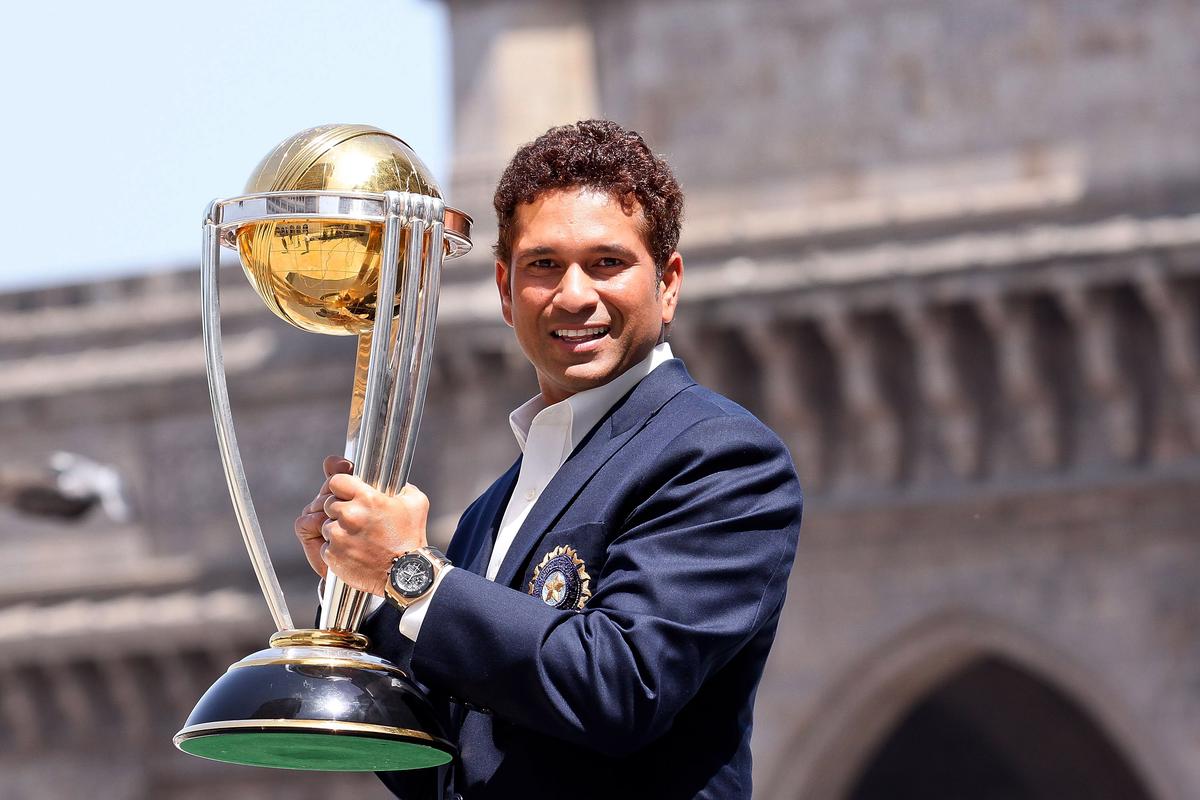50 years later: how the World Cup launched cricket into mainstream consciousness - The Hindu
Just mention World Cup and instantaneously football chimes into memory. It is an organic mental reflex, as this quadrennial championship is perhaps the biggest draw in sport and on a par with the Olympics. But, equally, in those countries that were a part of the British Empire of the past, World Cup also means the one linked with cricket.
And today (June 21) marks a special moment in the cricket World Cup’s journey, as exactly 50 years ago, the West Indies won the inaugural trophy after defeating Australia by 17 runs at Lord’s. Much water has flowed down the Thames since then while the willow game’s premier tournament continues to evolve.
Diverse notes
Cricket as a whole has found its diverse notes in the permanence of Tests, fluidity of ODIs and hyper-kinetic blitz of T20Is. Still, the conventional World Cup consisting of ODIs has maintained its unique appeal over five decades.
Back in 1975, Clive Lloyd’s men, all muscle and mayhem, were the rockstars. It almost seemed pre-ordained that the stars from the Caribbean would seize the title. The same tournament, in the initial stages, also revealed a tentative approach from some teams.
The first World Cup fixture, which pitted host England against India, witnessed Sunil Gavaskar remaining unbeaten on 36 from 174 balls. It was just that the classical Test opener got trapped in his shell. Years later, in a 1987 World Cup match at Nagpur, Gavaskar hammered an unbeaten 103 off a mere 88 deliveries against a stunned New Zealand. It was the Little Master’s life coming full circle in ODIs.
In the 1975 edition, cricket witnessed one of its greatest superstars make his presence felt. More than his batting, it was Vivian Richards the fielder who soared with his panache. He effected three run-outs in the final as the Aussies lost their breath. As the years rolled by, Richards, powerful shots and steely gaze, proved why he would always be seen as one of the greatest ever batters.
The all-rounder element was also reiterated by him, as his off-spin was a handy option within a team that often relied on its speed merchants. The West Indies made it two-in-a-row by claiming the title in 1979, Richards pulverising the England attack with his unbeaten 138.
Test matches, as a consequence of their five-day structure, often expose flaws and widen the gap between teams. ODIs, in contrast, shrink those spaces and allow even a David to dream about tripping a Goliath. Bowlers having a fixed number of overs often means batters are never subjected to the scrutiny that happens in a Test.
Tipping point
The tipping point was 1983, when Kapil’s Devils turned the world upside down with their ecstatic victory over Lloyd’s men in the summit clash at Lord’s. A paltry 183 was defended, Kapil plucked an incredible catch to dismiss Richards, and for many, Balwinder Singh Sandhu castling Gordon Greenidge, while the opener shouldered arms, remains a nostalgic highlight.
It was also a championship which featured one of the greatest ODI knocks, an innings that has acquired a mythical allure. Kapil’s 175 not out against Zimbabwe, and this after his team was reduced to 17 for five, has been resigned to being embalmed in a few newspaper pictures because the BBC crew inexplicably never covered this game!

Kapil Dev’s India winning the 1983 World Cup sparked a cricket revolution in the country. | Photo Credit: Getty Images
When Kapil held aloft the World Cup at Lord’s, it also launched a change in the power structure of cricket. It galvanised a new audience, expanded the market and soon commercial heft was vested in India, and to this day it remains that way. But beyond the financial pulls and pressures, Kapil’s team stressed the value of quality all-rounders, and it is these players who gave him multiple winning options through the tournament.
Historically, the World Cup has added layers to cricket and the way we interpret it. In the 1987 edition in India and Pakistan, Allan Border used the championship as a crucible to forge a strong Aussie unit. He held the cup at Eden Gardens, and it marked a decisive shift in Australia’s fortunes which remain in the ascendant even today.
Dean Jones propagated this adrenaline-thumping mix of frenetic batting, sharp fielding and some acerbic words at the opposition. It was a template that many players, including Virat Kohli, have adopted.
Cut to the 1992 World Cup in Australia and New Zealand, and cricket found another dimension. New Zealand captain Martin Crowe promoted the concept of the pinch-hitter atop the order, through Mark Greatbatch, and was equally adept at slowing down things by employing spinner Dipak Patel when the opposition stepped out to bat.
It was a championship which Imran Khan wrested for Pakistan even as he talked up young Inzamam-ul-Haq as the next great batter. The 1992 edition also had an aesthetic twist. The players donned coloured clothing. By this time, the World Cup was also seen as this springboard for teams, perceived as the lesser ones, to stun the critics.
And 1996 was Sri Lanka’s turn, as Arjuna Ranatunga’s men upset the Aussies in the final at Lahore. In Aravinda de Silva, Sanath Jayasuriya and Muttiah Muralitharan, Ranatunga had three aces who could outwit any rival.
The Big Three forms
The next three championships (1999, 2003 and 2007) belonged to Australia, as Steve Waugh first and Ricky Ponting twice held the cup. Mathew Hayden, Adam Gilchrist and Glenn McGrath proved their mettle, and the Aussie conveyor belt brooked no opposition.
The tide turned when India won the 2011 edition at home, with Captain Cool M.S. Dhoni lending his finishing touch even if it was Yuvraj Singh who set the entire base for India’s bull run in that event. That Sachin Tendulkar, who first turned out for India in 1989, rates this triumph as the finest in his career is an indicator of how relevant the World Cup still is, both for emotional recall and as a behemoth among sporting brands.

Sachin Tendulkar realised a dream as India became the first host nation to win the World Cup in 2011. | Photo Credit: Getty Images
As the years went past, with the exception of England in 2019, it was normal service all over again, as Australia prevailed in 2015 and 2023, with the last being a heart-break for Rohit Sharma and Company at Ahmedabad. Through its continuing journey, the World Cup holds infinite value among players and followers. It is a truism that cannot be denied even in this age of the Indian Premier League and other T20 indulgences. It also throws up fresh heroes like Ben Stokes and Travis Head, to name a few.
That a Kohli and a Rohit are perhaps stretching their ODI careers towards a hopeful swansong in the 2027 edition is further validation of the magnetic appeal of the World Cup. Even Javed Miandad dragged his career on until a tragic run-out in the 1996 World Cup quarterfinal against India in Bengaluru ended it.
While bilateral ODIs and T20Is shrink and cricket veers towards franchise T20 leagues, the World Cup will remain this vital destination that determines a player’s halo. And gratitude is owed to Lloyd’s champions — those buccaneering men, elastic on the field and forever enduring in their appeal.
That a Kohli and a Rohit are perhaps stretching their ODI careers towards a hopeful swansong in the 2027 edition is further validation of the magnetic appeal of the World Cup.










